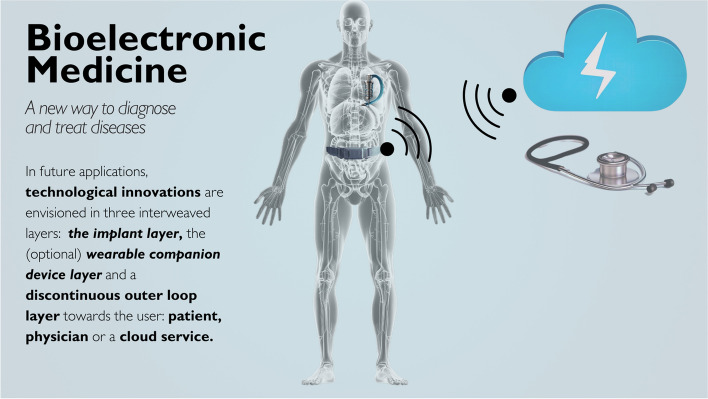Fig. 1.
Bioelectronic Medicine (BEM) is not necessarily restricted to a single, isolated and autonomous implant. Depending on the addressed condition, there may be a wearable companion for power transfer and data exchange. Distributed BEM employs secondary implants or sensing wearables. The wearables can act as a hub to a handheld device that provides feedback to the patient and allows a certain degree of control. Exchange with the cloud allows data access to a physician or a cloud service center. A clinician controller allows the physician to adjust the delivered treatment. Data processing may take place at different nodes, depending on their computational power and energy needs

